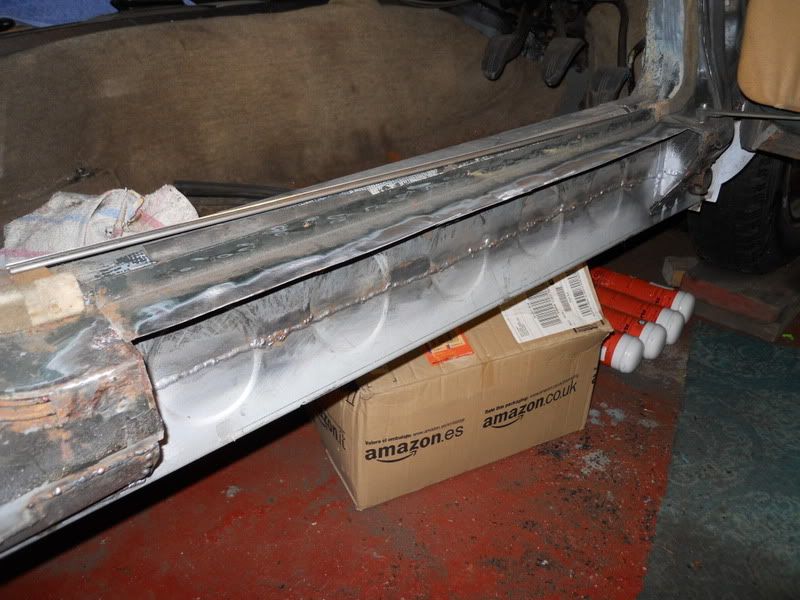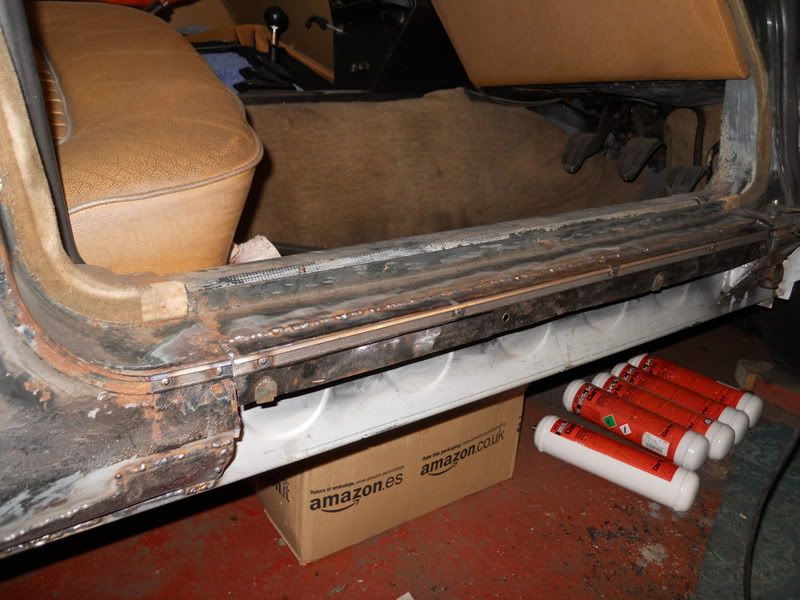georgecook
Member
Hello.. First time on the forum
I bought my 1972 2000TC a couple of months ago. It has an MOT and was "a good solid car with all welding done". It looked OK, I knew some work was required, but it was only when I removed the outer sills.............I know, I know, I know most of the contributors to this forum have been through the same nightmare, but it is still a shock to the system Whoever said that it is not possible to weld rusty metal should have a look at this car. Rusty patches of steel welded to rusty metal welded to rusty metal.
Anyway, I am sure you have heard all of this before a number of times
I ordered a couple of replacement inner sills from Wadhams (good service) and am in the process of fitting the right side unit to the car. I have decided to work on the right side only leaving the left side for reference until the right side is finished. I have removed and replaced all of the rusty inner parts of the box sections sections with new steel patches , its a very slow process but currently I am enjoying the process, lets hope this continues.
I would appreciate the assistance of the forum with a couple of questions
How are the replacement door tread plates fitted ?( I believe they were factory fitted to the inner sills with spot welds) unless they are spot welded to the sills before the sills are welded in place it is beyond my welding capabilities to spot weld them with the sill in place ie upside down welding.
What method is used to rust proof the sill box section before enclosing it with the inner sill?
Regards George
I bought my 1972 2000TC a couple of months ago. It has an MOT and was "a good solid car with all welding done". It looked OK, I knew some work was required, but it was only when I removed the outer sills.............I know, I know, I know most of the contributors to this forum have been through the same nightmare, but it is still a shock to the system Whoever said that it is not possible to weld rusty metal should have a look at this car. Rusty patches of steel welded to rusty metal welded to rusty metal.
Anyway, I am sure you have heard all of this before a number of times
I ordered a couple of replacement inner sills from Wadhams (good service) and am in the process of fitting the right side unit to the car. I have decided to work on the right side only leaving the left side for reference until the right side is finished. I have removed and replaced all of the rusty inner parts of the box sections sections with new steel patches , its a very slow process but currently I am enjoying the process, lets hope this continues.
I would appreciate the assistance of the forum with a couple of questions
How are the replacement door tread plates fitted ?( I believe they were factory fitted to the inner sills with spot welds) unless they are spot welded to the sills before the sills are welded in place it is beyond my welding capabilities to spot weld them with the sill in place ie upside down welding.
What method is used to rust proof the sill box section before enclosing it with the inner sill?
Regards George



